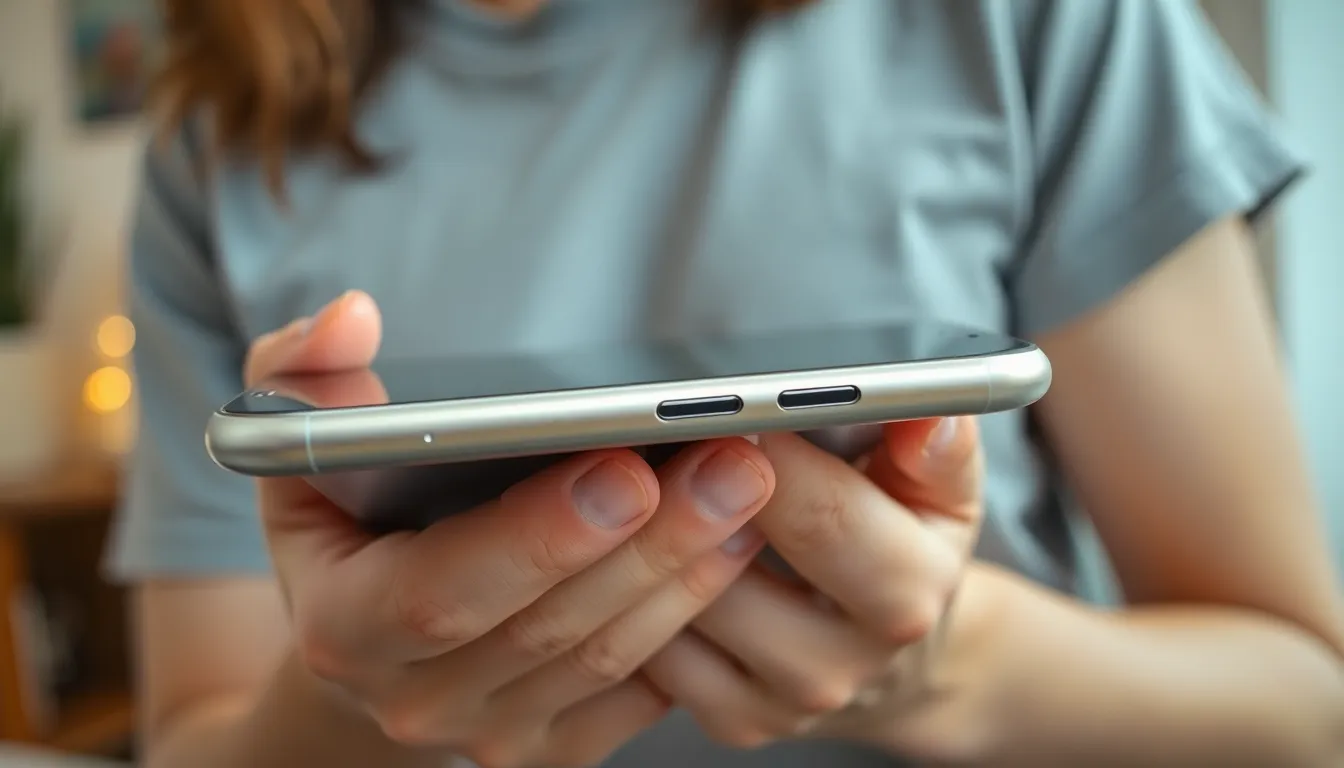Powering off an iPhone might seem like a simple task, but it can feel like solving a Rubik’s Cube while blindfolded for some. Whether it’s to save battery life, troubleshoot issues, or simply take a break from the endless notifications, knowing how to shut down that sleek device is essential.
Table of Contents
ToggleUnderstanding Your iPhone
Understanding how to power off an iPhone is essential for effective device management. Different models have unique power-off methods that users must be aware of.
Different Models and Their Power Off Methods
iPhone models utilize varying techniques to power off. The iPhone X and later models require users to press and hold the side button along with either volume button until the power off slider appears. Models like the iPhone 8 and earlier only need the side button or the top button pressed. Familiarizing oneself with these differences simplifies the process. Users may find an additional option by navigating through the settings app; selecting “General” and tapping “Shut Down” ensures a smooth power-off experience.
Importance of Properly Powering Off Your Device
Properly powering off an iPhone serves several important purposes. This action conserves battery life, especially during extended periods without use. It also aids in troubleshooting by refreshing the device’s system. Regularly shutting down the device helps reduce lag and ensures smooth operation. During software updates, a power-off can prevent complications by ensuring a clean installation. Understanding these advantages leads to better device maintenance and usage.
Methods to Power Off iPhone

Powering off an iPhone can be done easily through various methods. Each technique serves the same purpose but caters to different user preferences.
Using Physical Buttons
Pressing the side button alongside either volume button is the standard method for iPhone X and later models. Users should hold these buttons for a few seconds until the power-off slider appears. For iPhone 8 and earlier models, pressing and holding the side or top button suffices. Moving the slider from left to right turns off the device. Releasing the buttons too soon may interrupt the process, so users must ensure they hold them until the slider shows.
Via Settings Menu
Navigating to the Settings app provides another way to power off an iPhone. Users can select “General” within the menu. Tapping “Shut Down” prompts the power-off slider to appear. Sliding it from left to right powers down the device gracefully. This method works on all iPhone models, making it accessible for users unfamiliar with button combinations.
Troubleshooting Power Off Issues
Occasionally, users encounter difficulties powering off their iPhones. Understanding troubleshooting techniques can enhance the experience and ensure smooth operation.
When Your iPhone Doesn’t Respond
An unresponsive iPhone may prevent users from shutting it down through standard methods. In such cases, force-restarting the device offers a solution. For iPhone 8 and later models, quickly press and release the volume up button, then the volume down button. Next, press and hold the side button until the Apple logo appears. For iPhone 7 and 7 Plus, press and hold the volume down button and the side button simultaneously until the logo shows. Older models require holding the home button and the top or side button together until the Apple logo reappears.
What to Do If the Power Off Option is Missing
Sometimes, the power-off slider may not appear in the Settings app. Users should first restart the device to resolve this issue. If the option remains absent, updating iOS can restore functionality. Navigate to “Settings,” select “General,” and then tap “Software Update” to check for updates. A simple software reset can also address the problem. Hold down the both power and home buttons until the Apple logo appears, forcing a refresh of the operating system. Keeping the device updated often prevents such issues from arising.
Tips for Efficiently Managing Your Battery
Efficient battery management prolongs device lifespan and enhances user experience. Implementing effective practices can significantly improve battery health.
Best Practices for Battery Care
Charge iPhone with original or certified accessories to ensure safe and efficient power delivery. Avoid letting battery levels drop below 20% regularly, as deep discharges can harm longevity. Keep iPhone at moderate temperatures; extreme heat or cold causes battery efficiency issues. Turn on Low Power Mode during long days without access to charging. Close unused apps running in the background; this prevents unnecessary battery drain. Regularly check battery usage statistics in Settings and adjust app behaviors to conserve energy.
When to Power Off Your iPhone
Power off iPhone when not in use for extended periods; this conserves battery power. Restart the device when experiencing slow performance; it often resolves temporary glitches and aids performance. During software updates, shutting down ensures a smooth installation process. Users should also consider powering off if the device becomes unresponsive; this prevents further complications. If in low-signal areas, turning off iPhone may help save battery while searching for a signal.
Knowing how to power off an iPhone effectively is a vital skill for any user. It not only helps in conserving battery life but also aids in troubleshooting and managing device performance. With different methods available for various models users can choose the one that suits them best. Whether using button combinations or the Settings app the process is straightforward once familiar. Regularly powering off the device can enhance its longevity and ensure a smoother experience. By following the tips outlined for battery care and optimal usage users can maintain their iPhones in peak condition.









